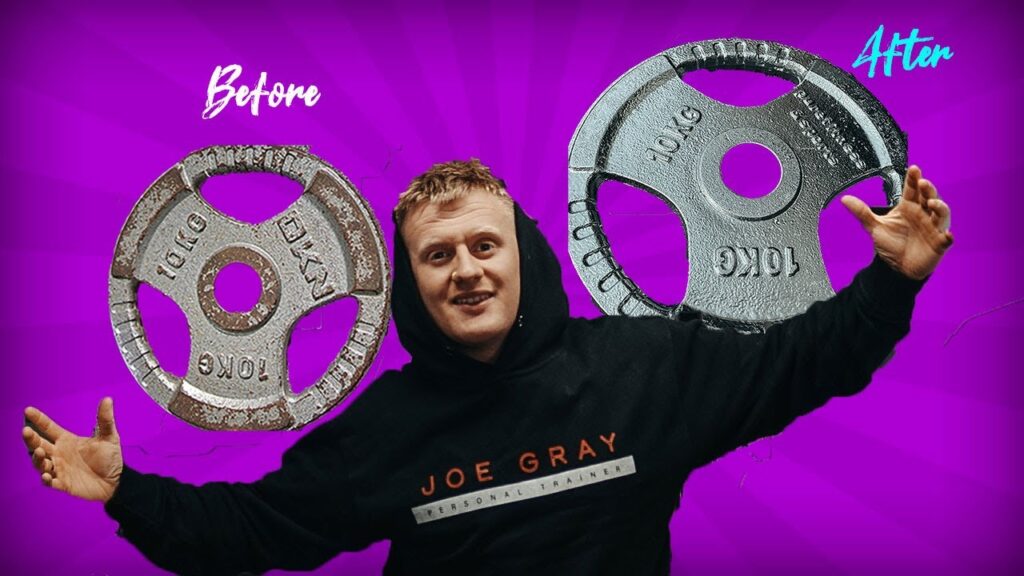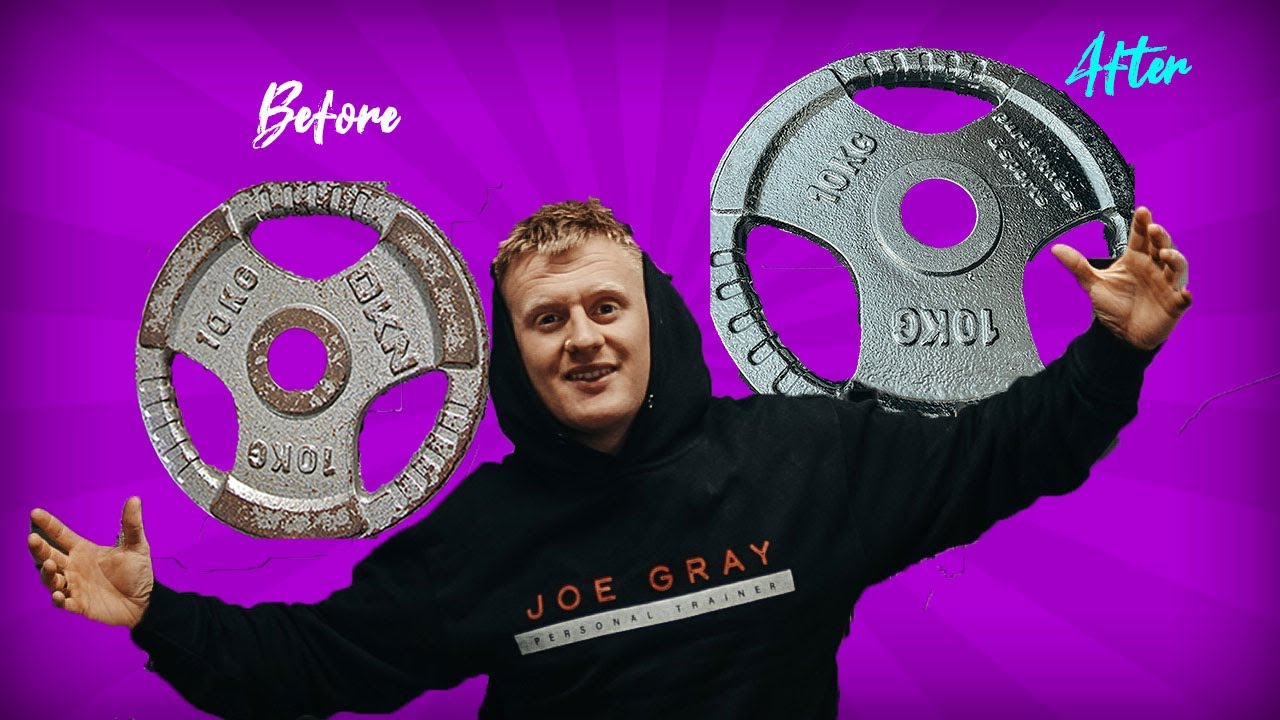
Battling the Rust: Restoring and Maintaining Your Rusted Weight Plates
For fitness enthusiasts, the clanging of weight plates is the soundtrack of progress. But the sight of rusted weight plates can be a disheartening one. Rust not only detracts from the aesthetic appeal of your home gym but can also compromise the integrity of the weight plates themselves and even pose a safety hazard. Understanding the causes of rust, knowing how to remove it effectively, and implementing preventative measures are essential for any serious lifter. This comprehensive guide will walk you through everything you need to know about dealing with rusted weight plates, ensuring your equipment remains in top condition for years to come.
Understanding the Enemy: Why Weight Plates Rust
Rust, scientifically known as iron oxide, is the result of a chemical reaction between iron, oxygen, and moisture. Weight plates, typically made of cast iron or steel, are particularly susceptible to this process. Several factors can contribute to the formation of rust on your weight plates:
- Humidity: High humidity levels in your workout area provide the moisture needed for the oxidation process. Garages, basements, and outdoor gyms are particularly prone to humidity issues.
- Sweat: Perspiration contains salts and acids that can accelerate the corrosion process. Leaving sweat on your weight plates after a workout is a sure way to encourage rust formation.
- Lack of Protective Coating: Some weight plates have a protective coating, such as paint or chrome plating, to prevent rust. However, this coating can wear away over time, exposing the underlying metal to the elements.
- Storage Conditions: Storing your weight plates in damp or poorly ventilated areas creates an ideal environment for rust to thrive.
- Scratches and Chips: Even small scratches or chips in the protective coating can allow moisture to penetrate and begin the rusting process.
Assessing the Damage: Is It Just Surface Rust?
Before you begin the restoration process, it’s crucial to assess the extent of the rust damage. Surface rust is a light, superficial layer of oxidation that can usually be easily removed. However, if the rust has penetrated deep into the metal, it can weaken the weight plates and compromise their structural integrity. Look for the following signs of severe rust damage:
- Deep pitting: Noticeable indentations or holes in the surface of the weight plates.
- Flaking or crumbling metal: The rust is causing the metal to break apart.
- Significant weight loss: The weight plates are noticeably lighter than their original weight.
If you observe any of these signs, it’s best to consult with a professional or consider replacing the weight plates altogether. Using severely rusted weight plates can be dangerous and could lead to injury.
The Arsenal: Gathering Your Rust Removal Tools
Removing rust from weight plates doesn’t require specialized equipment. You likely already have many of the necessary tools in your garage or workshop. Here’s a list of essential items:
- Wire Brush: A sturdy wire brush is essential for scrubbing away loose rust and debris. Choose a brush with stiff bristles made of steel or brass.
- Sandpaper: Various grits of sandpaper, from coarse to fine, will help remove stubborn rust and smooth the surface of the weight plates.
- Rust Remover: Chemical rust removers can be very effective for dissolving rust, especially in hard-to-reach areas. Choose a rust remover that is specifically designed for metal and follow the manufacturer’s instructions carefully.
- Protective Gear: Always wear gloves, eye protection, and a dust mask when working with rust and chemicals.
- Cleaning Supplies: You’ll need soap, water, and clean rags to wash and dry the weight plates after removing the rust.
- Optional Tools: A power drill with a wire brush attachment can significantly speed up the rust removal process. A rust converter can also be used to neutralize any remaining rust and prevent further corrosion.
The Battle Plan: Step-by-Step Rust Removal Guide
Now that you have your tools and have assessed the damage, it’s time to get to work. Follow these steps to effectively remove rust from your weight plates:
- Preparation: Start by cleaning the weight plates with soap and water to remove any dirt, grease, or loose debris. Dry them thoroughly with a clean rag.
- Scrubbing: Use the wire brush to scrub away as much loose rust as possible. Apply firm, even pressure and focus on areas with heavy rust buildup.
- Sanding: Use coarse-grit sandpaper to remove any remaining rust. Gradually move to finer grits to smooth the surface of the weight plates.
- Rust Remover (Optional): If you’re using a chemical rust remover, apply it according to the manufacturer’s instructions. Allow the rust remover to sit for the recommended time, then scrub the weight plates again with the wire brush.
- Cleaning and Drying: Wash the weight plates thoroughly with soap and water to remove any residue from the rust remover or sanding. Dry them completely with a clean rag.
- Rust Converter (Optional): If you’re using a rust converter, apply it according to the manufacturer’s instructions. This will neutralize any remaining rust and prevent further corrosion.
Repeat these steps as necessary until all the rust has been removed. Be patient and persistent, as the rust removal process can be time-consuming, especially for heavily rusted weight plates.
The Defense: Preventing Rust from Returning
Removing rust is only half the battle. To keep your weight plates in pristine condition, you need to implement preventative measures to prevent rust from returning. Here are some essential tips:
- Control Humidity: Use a dehumidifier in your workout area to reduce humidity levels. Proper ventilation is also crucial.
- Wipe Down After Use: Always wipe down your weight plates with a clean, dry cloth after each workout to remove sweat and moisture.
- Apply a Protective Coating: Apply a thin layer of oil or rust-inhibiting spray to the weight plates after cleaning. This will create a barrier against moisture and prevent rust from forming. Options include WD-40, silicone spray, or specialized rust inhibitors.
- Proper Storage: Store your weight plates in a dry, well-ventilated area. Consider using a weight plate rack to keep them off the floor and prevent moisture buildup.
- Regular Inspection: Regularly inspect your weight plates for signs of rust. Catching rust early will make it easier to remove and prevent further damage.
The Long Game: Long-Term Maintenance for Your Weight Plates
Maintaining your weight plates is an ongoing process. In addition to the preventative measures mentioned above, consider these long-term maintenance strategies:
- Touch-Up Paint: If your weight plates have a painted finish, touch up any chips or scratches with matching paint to prevent rust from forming.
- Re-Coating: If the protective coating on your weight plates has worn away significantly, consider re-coating them with paint or a rust-inhibiting coating.
- Professional Cleaning: For heavily rusted weight plates or for those who prefer not to tackle the job themselves, consider hiring a professional metal cleaning service.
Beyond Aesthetics: The Importance of Maintaining Your Weight Plates
While the appearance of your weight plates is important, maintaining them is about more than just aesthetics. Rusted weight plates can pose several risks:
- Reduced Lifespan: Rust can weaken the metal and shorten the lifespan of your weight plates.
- Inaccurate Weight: Heavy rust buildup can affect the accuracy of the weight, which can impact your workouts.
- Safety Hazards: Flaking rust can be a nuisance and can even cause cuts or abrasions. Severely rusted weight plates can also be more prone to cracking or breaking under heavy loads, posing a serious safety risk.
By taking the time to properly restore and maintain your weight plates, you’re not only preserving your investment but also ensuring your safety and maximizing the effectiveness of your workouts. Don’t let rust win the battle. With a little effort and the right tools, you can keep your weight plates looking and performing their best for years to come.
Investing in your fitness equipment is an investment in your health. Taking care of your weight plates is a small price to pay for the long-term benefits of a well-maintained home gym. Remember to stay consistent with your cleaning and preventative measures, and you’ll be able to enjoy your weight plates for many years to come. Happy lifting!
[See also: How to Clean Your Home Gym Equipment]
[See also: Best Weight Plate Storage Solutions]
[See also: Building a Budget-Friendly Home Gym]

